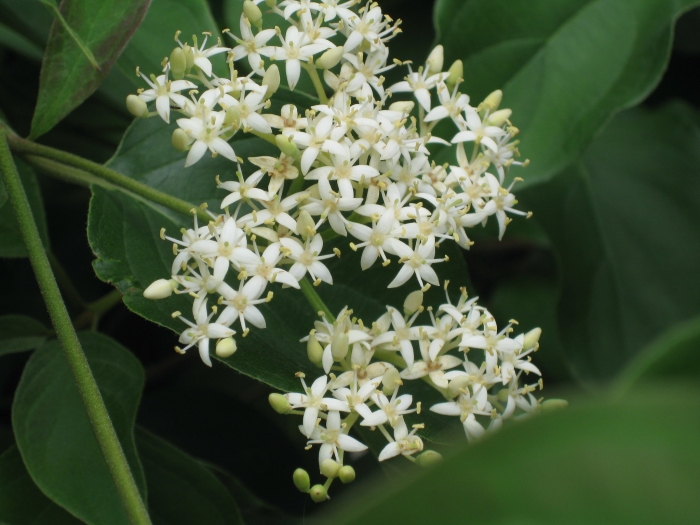Gray Dogwood
(Cornus racemosa)
Gray Dogwood (Cornus racemosa)
/
/

Cranbrook Science
CC BY 2.0






































































Estimated Native Range
Summary
Gray Dogwood is valued for its wildlife benefits and its ability to stabilize soil in erosion-prone areas. It is commonly used for naturalizing in wetland restoration, as a border planting, or in wildlife gardens. It thrives in full sun to part shade and prefers medium amounts of water with well-drained soil, though it can tolerate a range of soil conditions, including clay. While generally low-maintenance, it can spread aggressively via rhizomes, which should be considered when planting. Cornus racemosa is potentially invasive outside its native range, so gardeners should consult local guidelines before planting.CC BY-SA 4.0
Plant Description
- Plant Type: Shrub
- Height: 10-15 feet
- Width: 10-15 feet
- Growth Rate: Moderate
- Flower Color: White
- Flowering Season: Spring
- Leaf Retention: Deciduous
Growth Requirements
- Sun: Full Sun, Part Shade
- Water: Medium
- Drainage: Medium, Slow
Common Uses
Bee Garden, Bird Garden, Butterfly Garden, Deer Resistant, Erosion Control, Fire Resistant, Hedges, Hummingbird Garden, Low Maintenance, Rabbit Resistant, Showy Flowers, Street Planting
Natural Habitat
Wetland edges, moist forest clearings, and along streams in southeastern Canada and the northeastern United States
Other Names
Common Names: Panicled Dogwood, Grey Dogwood, Northern Swamp Dogwood, Red-Panicled Dogwood, Rispen-Hartriegel, Cornouiller À Grappes, Silverkornell
Scientific Names: , Cornus racemosa, Swida racemosa, Cornus foemina subsp. racemosa, Svida racemosa, Cornus paniculata, Cornus racemosa f. caeruleocarpa, Cornus racemosa f. nielsenii, Cornus comosa, Cornus paniculata var. albida
GBIF Accepted Name: Cornus racemosa Lam.